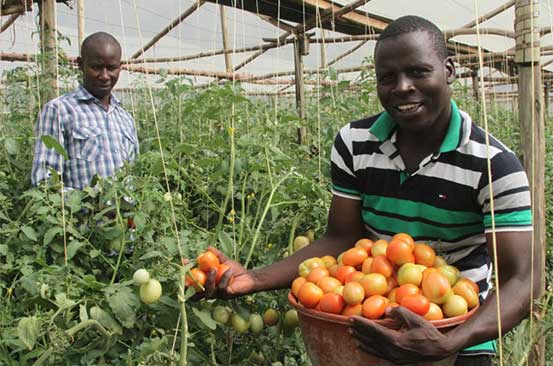The price of one crate of tomatoes has increased from Sh4,000 to Sh10,000 driven by high demand occasioned by the current dry weather that has led to shortage of the commodity.
In Uthiru market for instance consumers pay Sh10 to for one tomato fruit up from five shillings three months ago.
According to Consumer Prices Indices from Kenya National Bureau of Statistics, month on month price for tomatoes increased 7.44 per cent from Sh44.32 to Sh47.30 per kilo between January and February this year.
Kenya produces an average of 283,000 tonnes of tomatoes annually against a demand of 300,000 tonnes. In 2017, the country imported 27,000 tonnes of the fruit.
The ministry of agriculture expects the current shortage to persist until April at the onset of the long rains.
Related content
Nandi farmer makes over Sh1.5m a season from tomato, tea and cabbage sales
Farmer invests in water to increase his gross income from Sh30,000 to Sh360,000 a season

A farmer harvesting tomatoes in the past. Courtesy
Tomatoes require moisture levels of about 600mm well distributed throughout the growing season. It does well in well drained light loam soils with high organic matter content and Ph levels of 5-7.5. It is fairly adaptable and grows well in warm conditions in optimum temperatures of 20 -25 degrees C during the day and 15 -17 degrees C at night.
The fruit is used in salads, cooked as a vegetable or made as a paste in the value addition process.
In 2016 for instance, two farmers Julius Onyancha and Reuben Sang’anyi in Kisii started off-season tomato farming using Sh65,000 as an initial capital investment and earned Sh150,000 as profit.
“That encouraged us to increase the size of our farm to one acre from. We harvested 55 crates and sold about 50 at Sh4000 each as the demand of tomatoes was high,” said Onyancha.
According to the National Farmers Service, tomato farming is appropriate during the dry season as the crop is less prone to diseases such as tomato blight, leaf curling and powdery mildew which cause more than half of the losses in affected plants.
















Comments powered by CComment